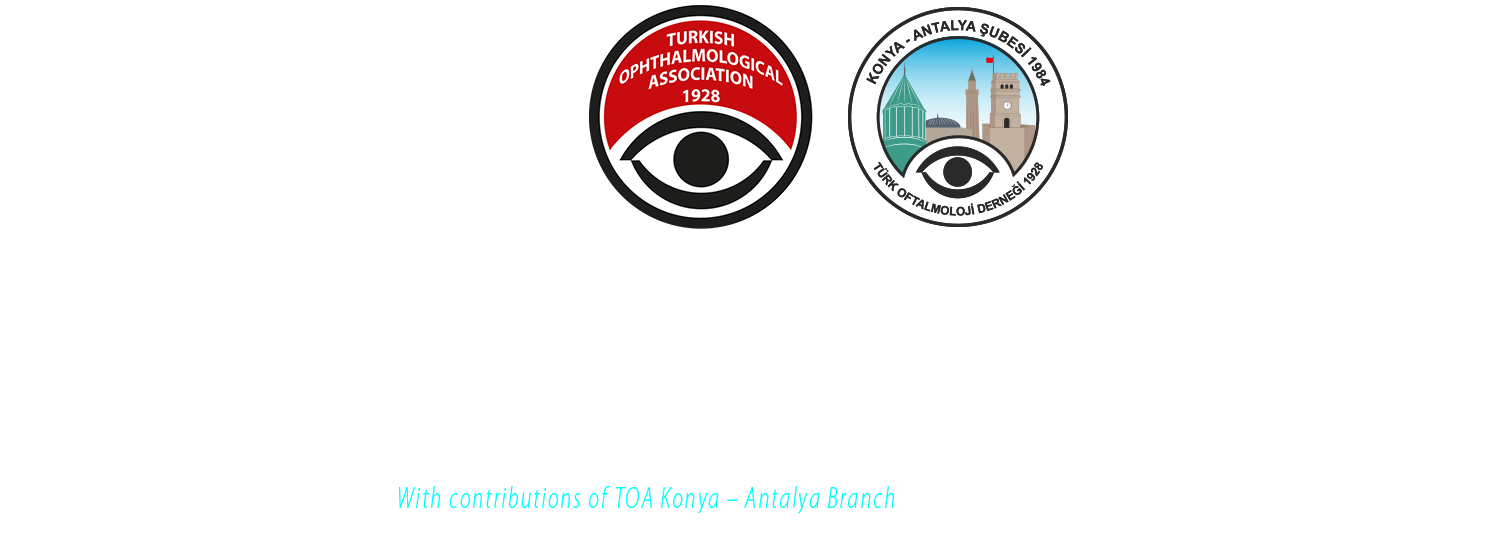



Report Summary Sending Rules
Report summary sending rules are regulated according to NCOC Regulation articles 7.
If a TR citizen ophthalmologist sends the report, he/she must be a TOA member and he/she must not have unpaid dues.
(For other specializations and foreign individuals –even if they are ophthalmologists- are not required to be TOA members.)
Report summaries will only be sent via websites.
A person may be send work summary of “One oral presentation + one poster” or “Two posters” with first name. Any application that does not comply with this will be automatically rejected by the admission site. Case reports with only one case may only be sent as a poster. Oral presentation time will be limited to 5 minutes including video presentation.
Posters will be provided as e-posters and will be prepared on online platform. In addition, They are not required to be prepared on Microsoft PowerPoint etc.
Application to “Best research”, “Best poster”, “Best video” and “Best medical photograph” Report Summaries and Congress Awards shall be made by choosing the appropriate option in the report sending form in the website. Finalization of the application shall come after assessment commission approves the study.
Sending Report Summaries via Website
Report summaries shall be sent via the link located in the website of the congress (www.todnet.org). All applications made in any other way such as e-mail, written form, fax, disc etc. will be rejected. Only the first writers are authorized to send report summaries. Therefore, report owners must know their TOA ID numbers and website passwords. Our members can access these information by filling the form in the Member Information Bank or directly contacting [email protected]
The same rules apply to nonmembers as well. These persons will receive a temporary ID No and Password only for the congress period. In order to receive these, they must fill the membership form on the congress website (www.todnet.org). People who undertake filling out forms for other people must know their TOA ID Numbers and Website Passwords. A person may be send work summary of “One oral presentation + one poster” or “Two posters” with first name. Report summary admission form filling rules are detailed in the related web page.
In order to avoid difficulties, read these rules very carefully and especially consider the below matters:
Assessment of Reports
Report summaries shall be sent via online system to Assessment Commissions of 3 consisting of related Department Heads, Department Secretary and Department Training Representative by covering up the “writer names” and “place of study” fields after subject classification supervised by NCOC. Assessment commissions will take care to make oral report and poster assessments according to numbers given to them by NCOC.
Members of the Assessment Commissions will give their opinions by filling out the form on digital platform. Reports will be assessed as “approved-rejected” and “oral-poster-vide-medical photograph”. Assessment commissions have the right to change the presentation choices. In accordance with commission’s choice, first names may present two oral reports.
Case reports consisting of one case (that are not required to be presented in video presentations) shall not be transformed to oral presentation since they are only approved as posters. The commission may require additional proof from writers in order to clarify that the study is original.